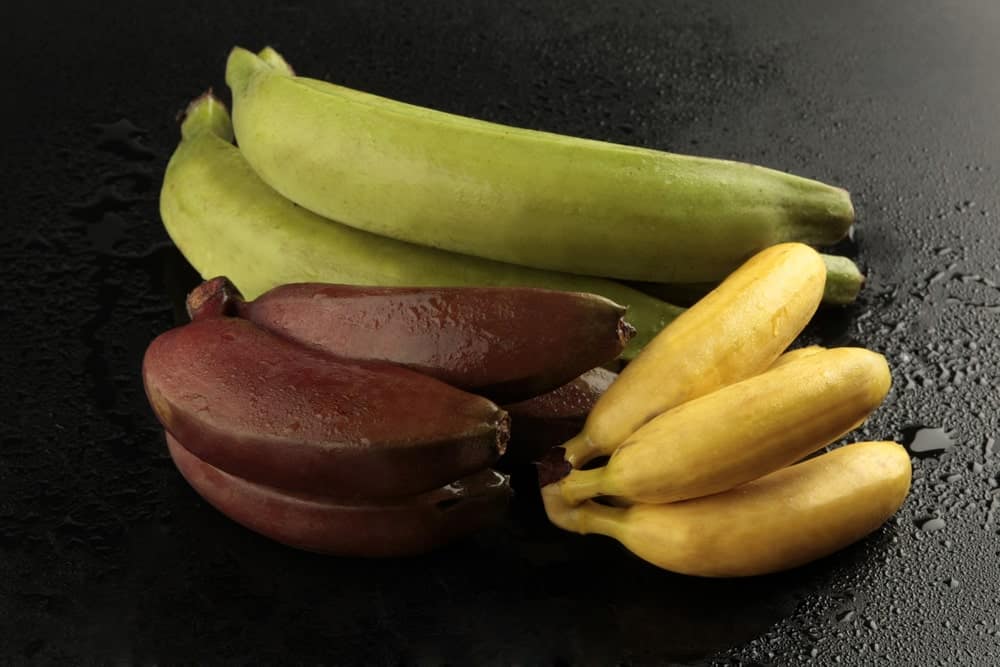
Did you know that a banana is technically classified as a berry? You might be familiar with the standard yellow banana found in American grocery stores, but there are actually many more types of bananas than you might be familiar with. In fact, bananas come in a variety of shapes, sizes, and textures. These are just a few of the types of bananas you should know.
Bananas Nutritional Facts Chart
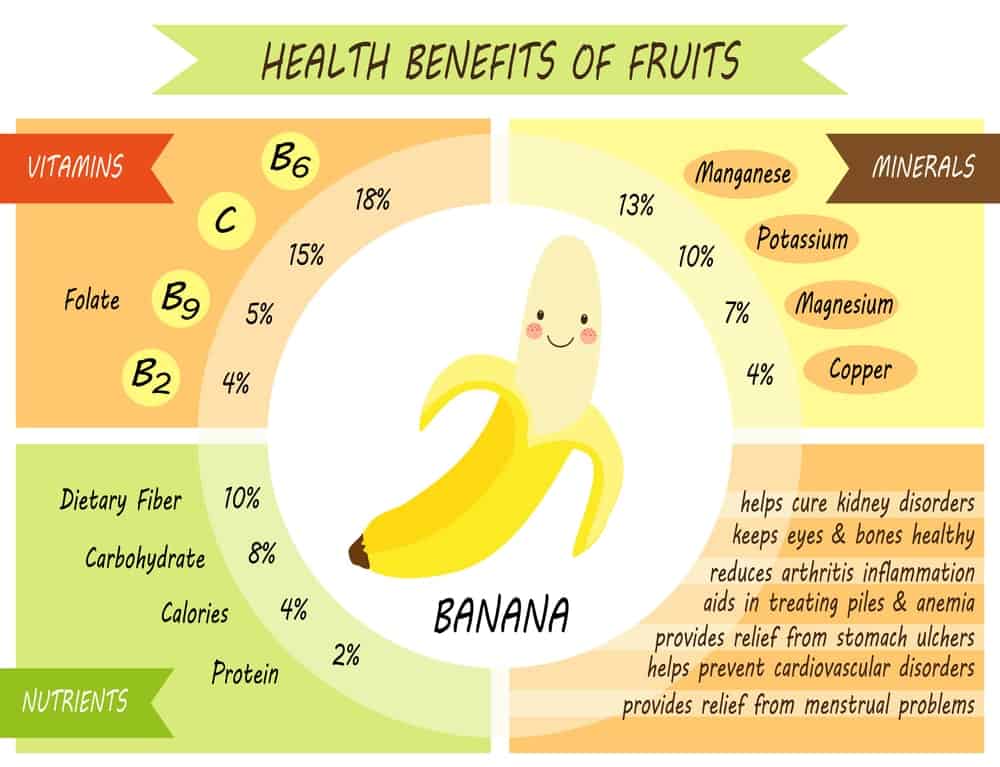
Types of Bananas
Plantains
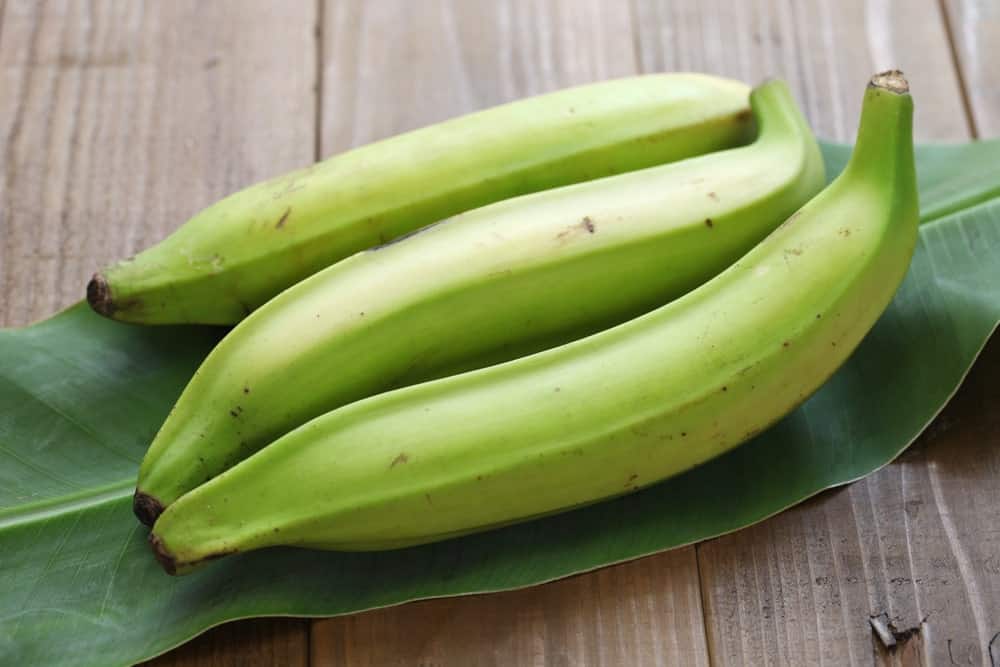
Plantains can be found in some grocery stores in the United States. These starchy fruits are similar in appearance to bananas, but the core difference is that they just aren’t as sweet. This means that you might find plantains in savory dishes rather than in fruity desserts.
Additionally, plantains are not typically eaten raw like bananas. They are usually cooked and incorporated into other dishes. They contribute to the flavor of a dish and are rarely overpowering. You might also hear plantains called “cooking bananas.”
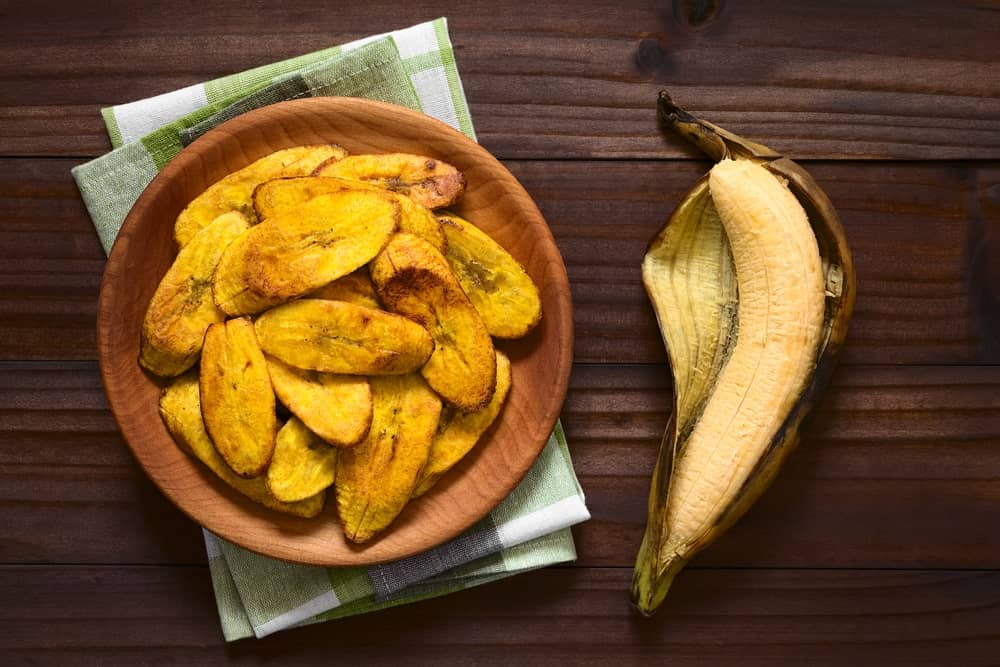
Fried plantains are one of the most common uses of this ingredient. It is commonly consumed in Central America, South America, the Caribbean, Southeast Asia, West Africa, and East Africa. Sometimes fried plantains are mixed with chili peppers and onions, but other times they are sold by street vendors as crispy snacks.
There are also different types of plantains. For instance, macho plantain is more common in the United States than other types of plantains.
Baby Bananas
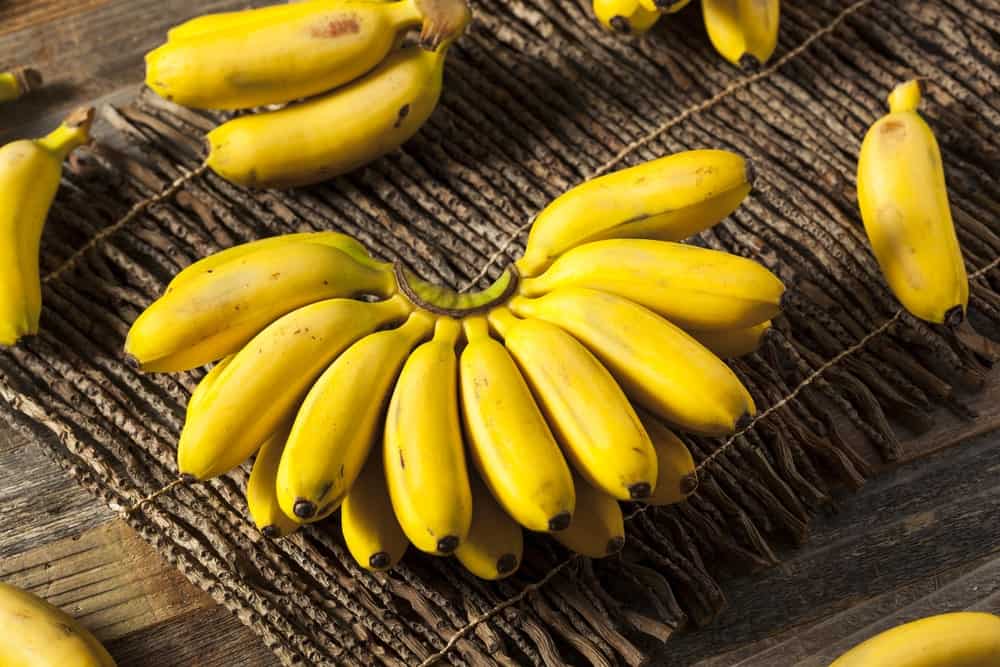
Baby bananas, sometimes called lady-finger bananas, are small and very sweet. Unlike plantains, baby bananas are usually eaten raw, like most other fruits. They are typically about three inches and bright yellow when they are ripe. There are actually a lot of nicknames for this kind of banana, including sugar bananas, date bananas, and fig bananas, which is likely a reflection of the banana-like taste.
Not interested in eating these bananas raw? They can also be used in smoothies, puddings, cakes, muffins, bread, tarts, and even baby food. Plus, they are low in calories and contain tons of Vitamin B6, fiber, and potassium.
Cavendish Bananas
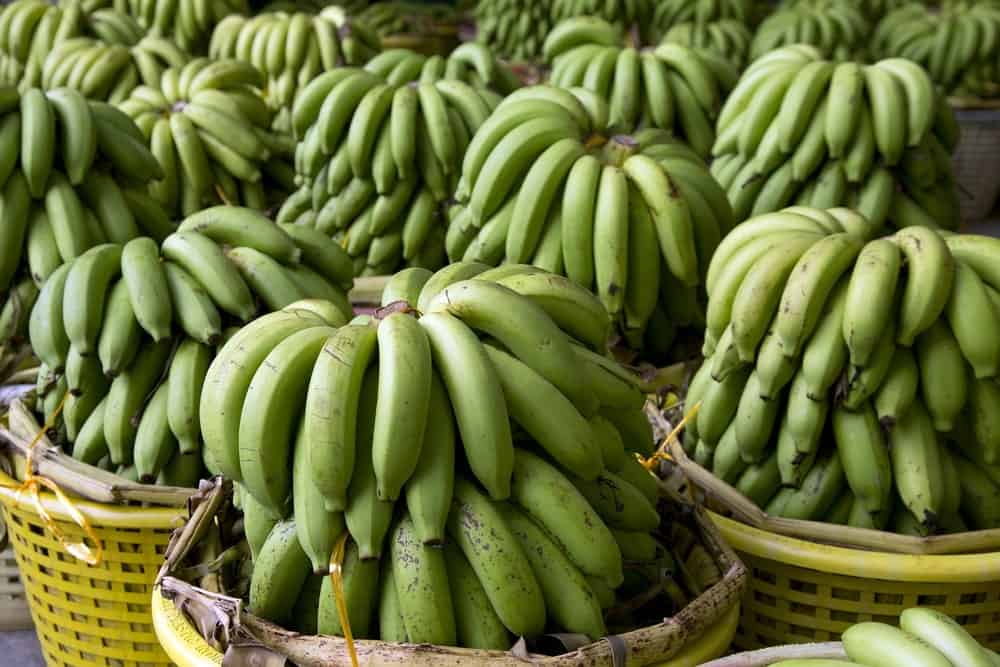
Cavendish bananas are by far the most popular version of the fruit, and you will find them in most grocery stores. The flavor of these bananas verges on sweet, but the flavor can depend on the fruit’s ripeness.
A banana that is over-ripe is much sweeter than a banana that is under-ripe. You can spot a perfect banana by its yellow skin. Over-ripe fruit will have brown spots or perhaps be completely brown. Under-ripe bananas tend to be more green. If you end up with over-ripe bananas, don’t fret. You can still use them to make delicious sweetbreads.
Cavendish bananas have many health benefits. For instance, they contain magnesium, Vitamin C, and Vitamin B6. They are thought to help strengthen the nervous system and even improve the white blood cells in one’s body.
Dwarf Cavendish Bananas
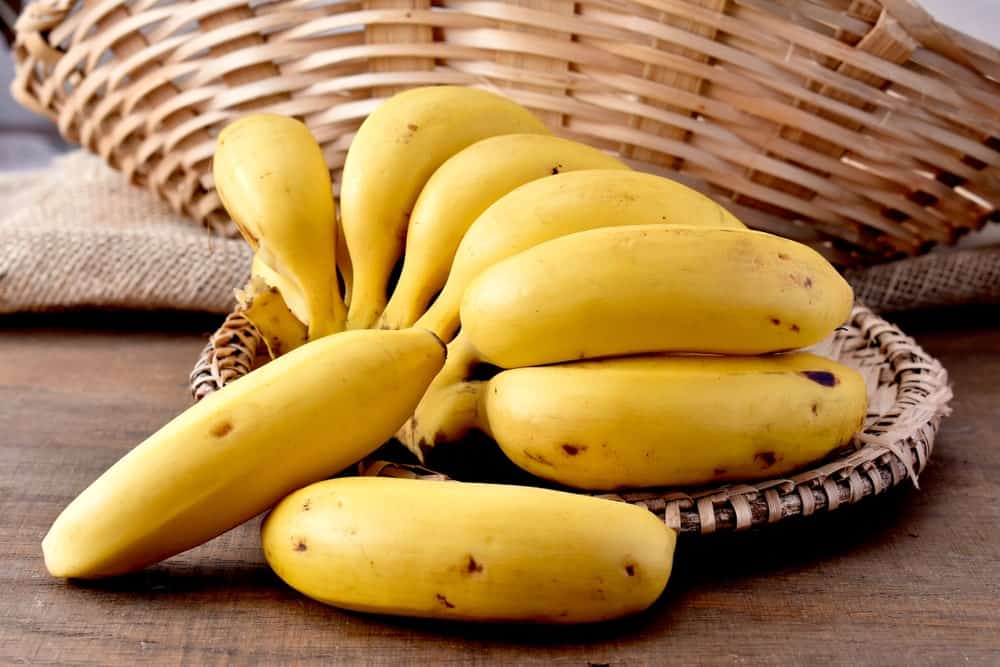
This version of the popular Cavendish banana is originally purple or very dark brown until it develops into the yellow banana you see in stores. These bananas are relatively popular because the trees they grow on are perfectly sized for mass production of the fruit.
For instance, planting your own Dwarf Cavendish Banana tree could yield you about 90 bananas a year. This means you could have an abundance of bananas to make desserts like bread and cakes. Plus, these bananas can be eaten plain and raw, just like their larger counterpart.
Giant Cavendish Bananas
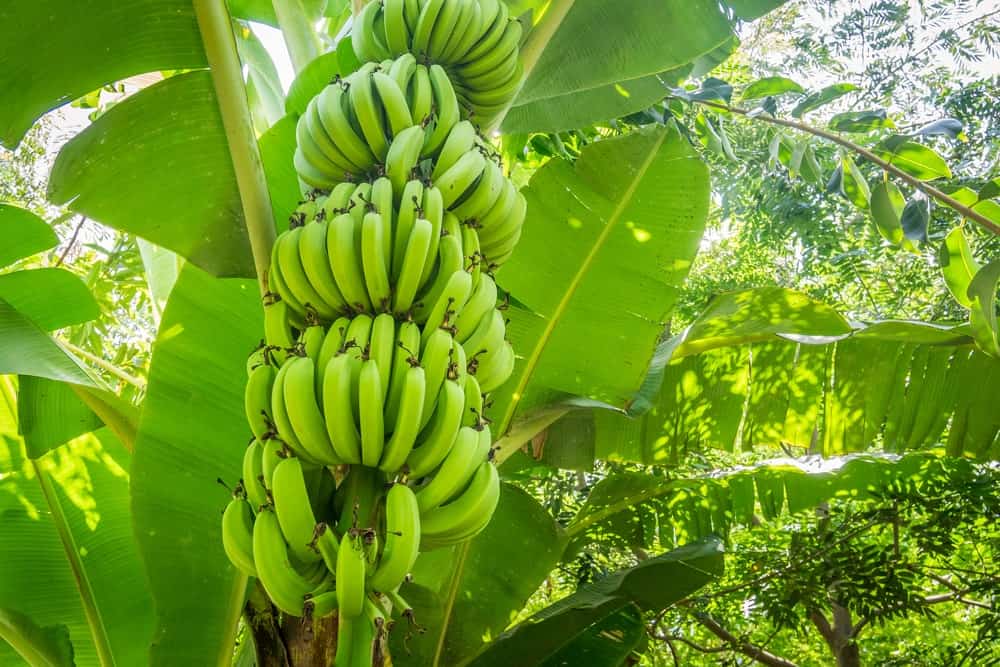
You may have heard the Giant Cavendish Banana referred to as a William banana. These bananas, as their name implies, are larger than the standard Cavendish banana. The taste is mild, hinging on sweet.
These bananas are often sold before they actually ripen, so you may see them still green in stores. As they ripen, they become yellow like their smaller counterparts. They are usually eaten raw once ripe. Many people actually use these bananas to make their banana nut bread by storing the fruit in a paper bag or with apples to ripen them more quickly.
Pisang Raja
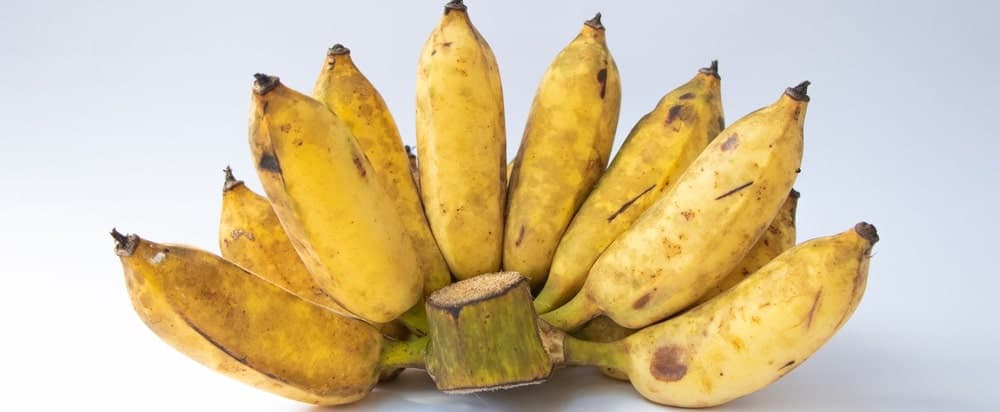
Pisang Raja bananas are one of Indonesia’s most popular bananas, and they are often sold by street vendors. For example, you will find them in Pisang Goreng, a type of banana fritter. This banana is best used for this kind of dish because of its texture and honey-sweet taste.
These bananas come in different colors, including orange and yellow. The plants themselves are beautiful and selected by many homeowners for their ornamental appearance. Outside of Asia, you are not likely to find the bananas themselves in local markets.
Red Bananas
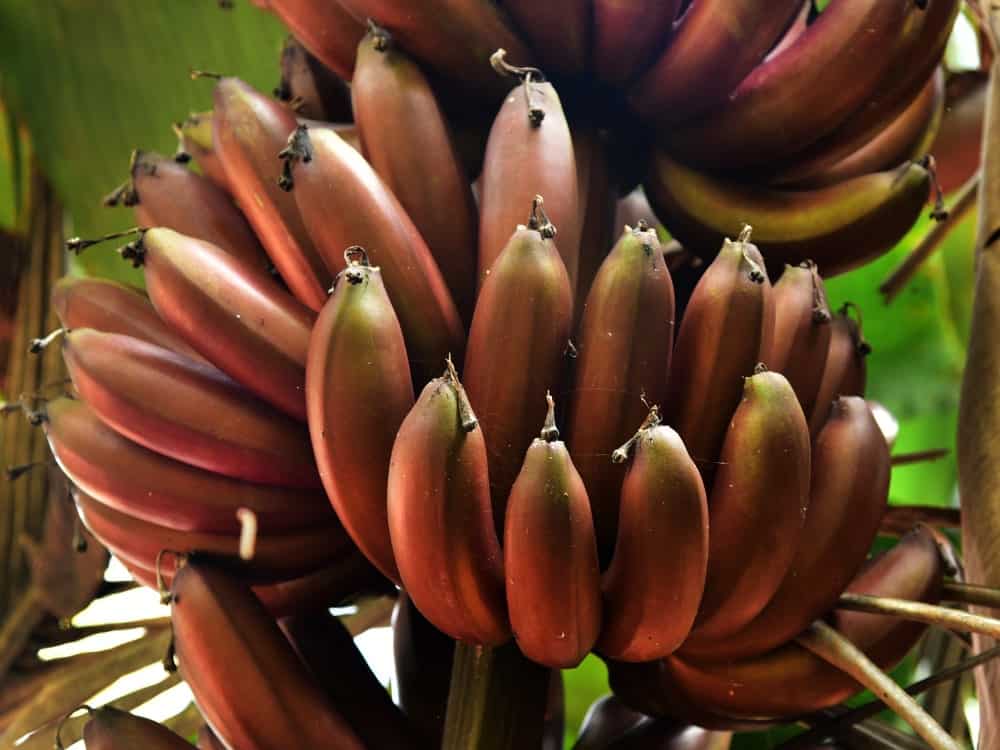
Red bananas are named after the color of their skin, a red-purple hue in most cases. In some cases, these bananas tend toward a different color, like pink or orange. The flavor of these bananas may be surprising, perhaps with a raspberry flavor that is sweeter than other varieties of fruit.
In most cases, red bananas are found in areas like South America, Asia, and East Africa. In Central America, red bananas are also very popular. They are eaten raw as a sweet treat or used to make juices and smoothies.
Don’t be fooled by the sweet taste. Red bananas have many health benefits, including Vitamin C, beta carotene, potassium, and iron. Compared to most popular bananas, these ones are smaller and have thicker skin. The fruit itself is smaller than the fruit inside the Cavendish banana.
Manzano Banana
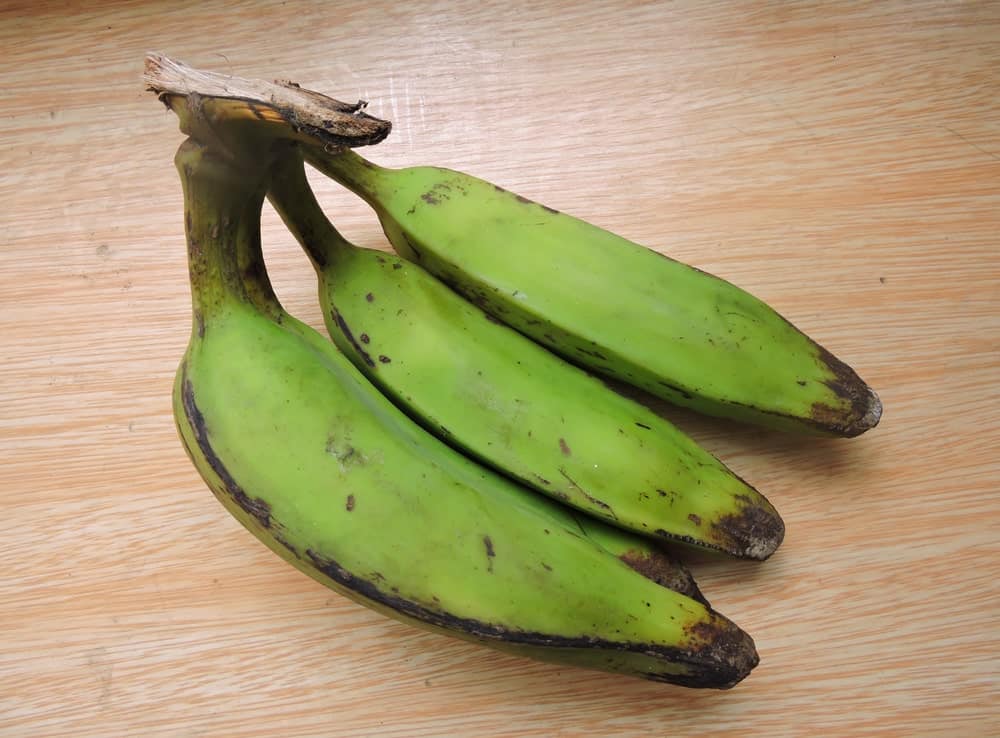
Manzano bananas, sometimes called apple bananas, are popular among those who prefer banana-flavored desserts. The taste is mild and on a sweetness level similar to berries and apples. You’ll find Manzano apples throughout the Caribbean, South America, and Mexico.
Monzanos turn yellow when they are ready to eat. Once ripe, these fruits provide ample Vitamin C in addition to fiber, potassium, and amino acids. The texture of the banana pairs well with smoothies, puddings, pies, and other desserts.
Blue Java Bananas
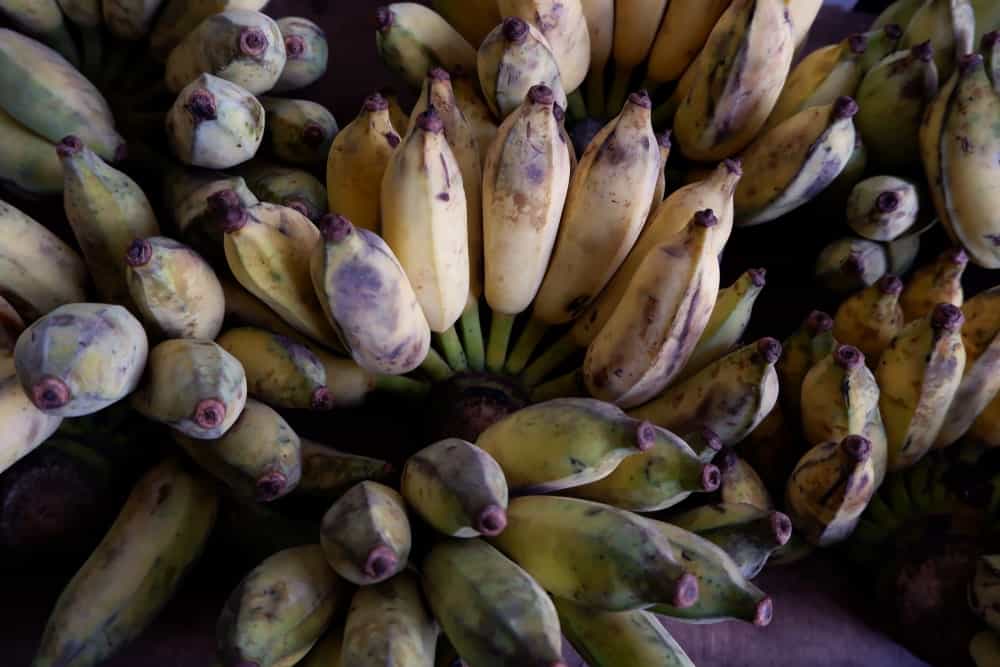
The blue java banana is perhaps one of the most intriguing bananas based on its blue color before it is totally ripened. The banana is sweet with a very fresh smell. Some people call these bananas the ice cream banana based on its very sweet flavor. Some people have compared its flavor to vanilla. Generally, these bananas are cooked before they are consumed, but some people do like to eat them raw.
The blue java banana is also unique in that its plant is very cold-tolerant. It also stands up to wind and other types of weather, making it quite hardy.
Burro Bananas
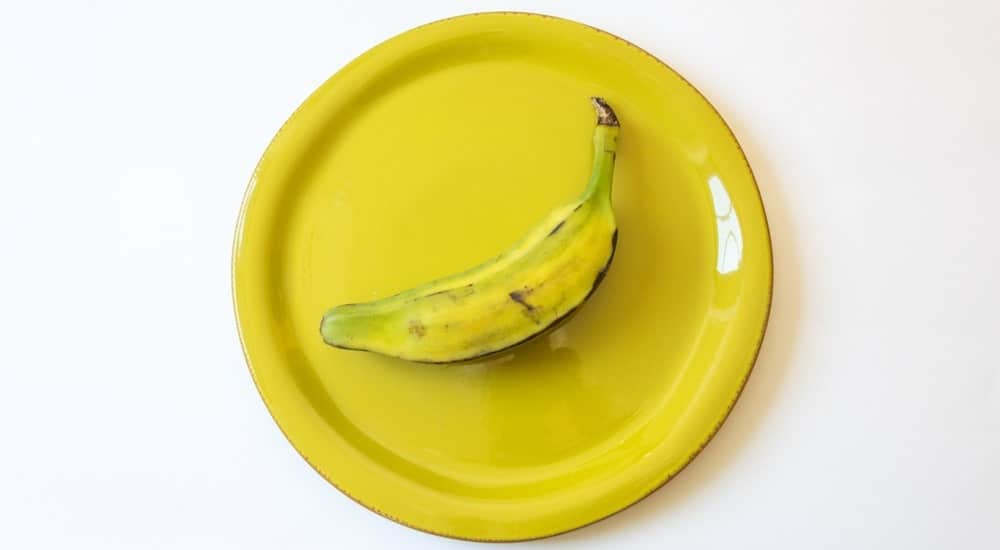
The burro banana, also known as the hog banana, Orinoco banana, and horse banana, is one of the most tart-flavored bananas. These bananas could almost be described as having a lemon taste. Unlike most bananas, these ones offer more of a square shape.
Once ripened, burro bananas are yellow with black spots. In many cases, the ripened burro banana is almost crisp inside. The banana contains a surplus of Vitamin B, Vitamin C, fiber, potassium, and magnesium.
Burro bananas are frequently found in subtropical and tropical regions. Burro bananas are frequently found in Filipino, Latin, Indian, Caribbean, and Thai cuisine. They are also frequently paired with meats, tart fruits, berries, cream, and even spicy chiles.
Barangan Bananas
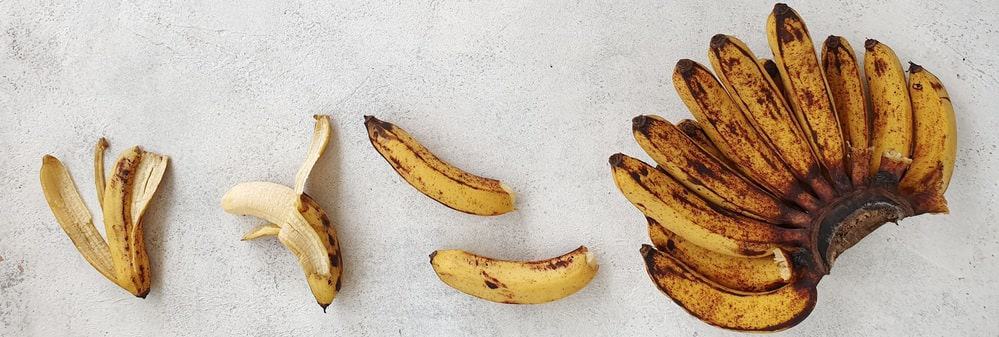
The barangan banana is unique in its appearance. Once ripe, these bananas are yellow with black dots. On the surface, this could be unappealing. Once you open up the banana, you find white flesh with the sweet taste of the popular Cavendish banana.
This is yet another dessert banana, and it is common in certain regions of the world. The health benefits of barangan bananas include many of the same benefits as the other bananas, including Vitamins B and C.
Goldfinger Bananas
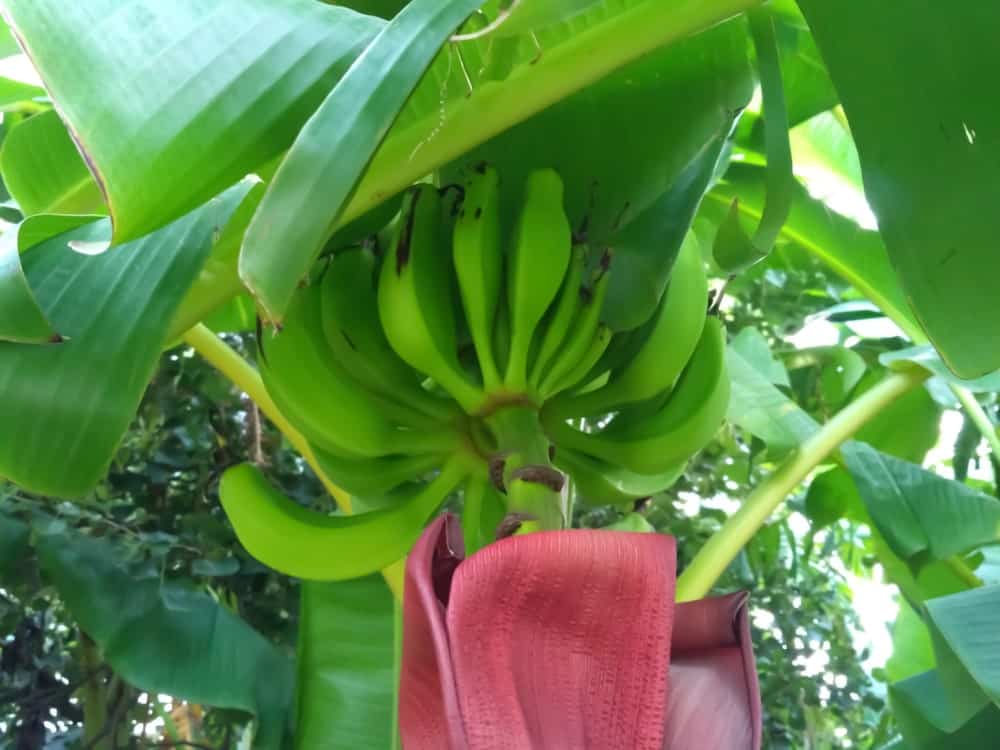
The goldfinger banana was actually developed by two men to become more resistant to natural pests in the regions in which they grow. Uniquely, Goldfinger bananas take longer to become ripe. The plants themselves are actually quite hardy, resistant to the wind and cold weather.
These bananas are most popular in Honduras, but they can also be found throughout Europe and North America. These bananas are eaten in a variety of ways. Before they ripen, the bananas can be cooked into crispy chips. This is tasty street food. In other locations, the ripe dish is used to create desserts like bread and cake.
Saba Banana
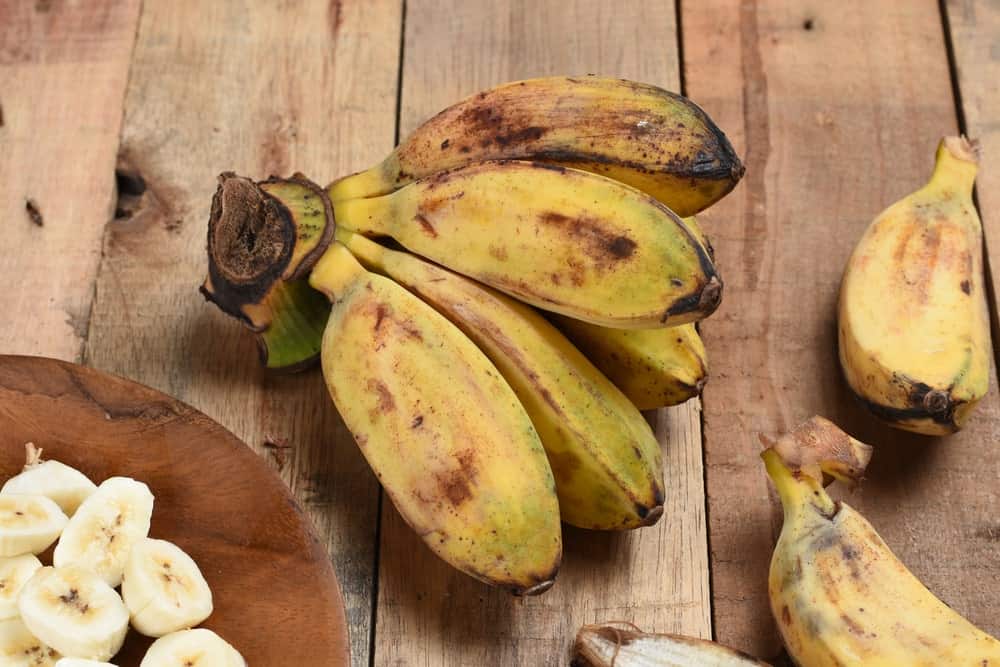
The saba banana is known for having a very angular shape. The fruit itself has thick skin, which makes it quite easy to ship saba bananas from one place to another before the fruit goes bad. These bananas are also very resistant to a variety of pests and weather conditions. In fact, many people like to plant the saba banana tree for its appearance.
In the Philippines, the saba banana is a dish frequently served after cooking. This kind of banana is a staple of cooking and adds a lot of flavor to common dishes like halo-halo and ginanggang.
Mysore Banana
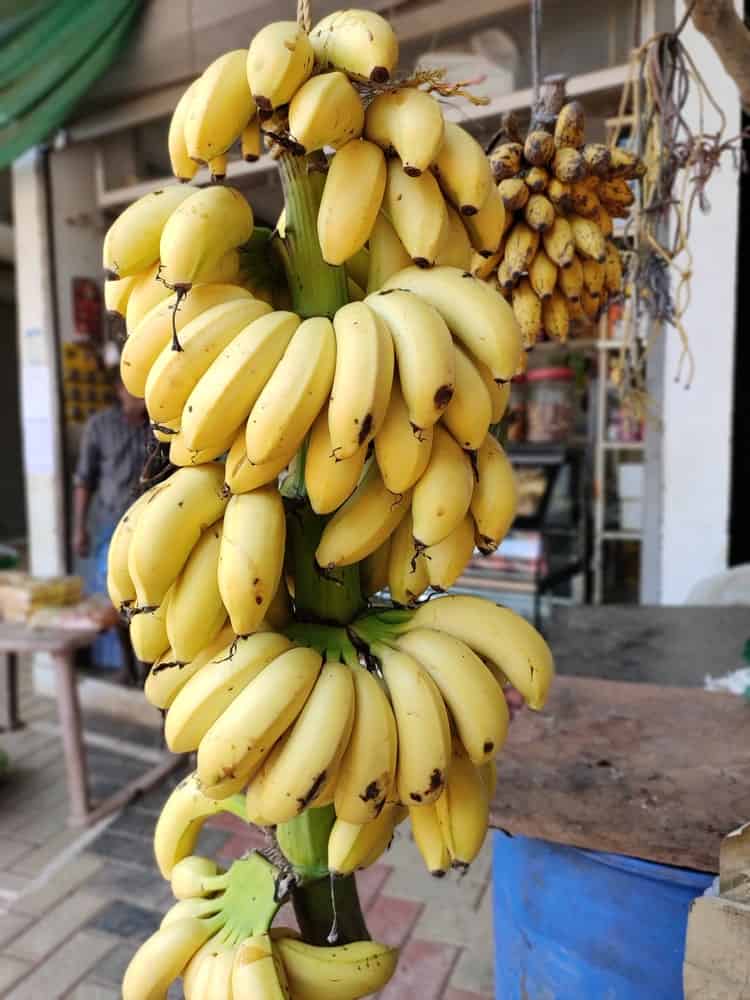
The Mysore banana is very small, but it is mighty. In India, the Mysore banana is one of the most important crops. Unlike most other bananas on this list, the Mysore is a bit tart.
Bananas Are More Versatile Than You Think
Many people do not realize that bananas are so versatile. Not only do they work in sweet dessert bread, but they are also a staple of so many different savory dishes.
For instance, one of the most popular banana desserts is banana bread, made from over-ripened, mashed bananas. The dish is moist and crumbly, more like a cake than a loaf of bread. Then, you have the delicious banoffee pie, an English dessert. The dish is made from bananas, condensed milk, toffee, and a cookie base.
If you want to get into dishes not as common in the United States, you might consider Pisang Goreng, a dish common in Indonesia. The street food is made from plantains and bananas that are deep-fried and served plain or coated in something like cinnamon sugar or even cheese.
On the savory end of the spectrum, you will find bananas used in Thai curry. The bananas can be combined with quinoa, chickpeas, snap peas, cashews, and more.
In some types of dishes, people even use bananas as a substitute for eggs to make vegan-friendly dishes. For example, you can make pancakes out of bananas if you run out of eggs.
As you can see, there are a lot of reasons to enjoy bananas. Even if you only eat raw bananas, you can find some variety in this fruit that allows you to find a flavor that you really enjoy. You might just have to step outside of the box to find that perfect fruit.
FAQs
Do Bananas Have Seeds?
Yes, bananas do have seeds, but they are very rare. The seeds can be seen but are not able to contribute to bananas being reproduced. (source: Prepared Cooks)
How Many Bananas in a Pound?
One pound of bananas typically contains about 3 to 4 medium-sized bananas. Keep in mind that banana sizes vary, so the quantity may differ slightly.
How Many Bananas in a Cup?
It all depends on how you slice them.
You’ll find:
- Around 2-3 mashed bananas in a cup
- Approximately 1½ sliced bananas in a cup
- About ¾ of a chopped banana in a cup
How Much Does a Banana Weigh?
Banana weights can differ based on size and type:
- Small banana (6-7 inches long): 3-4 ounces
- Medium banana (7-8 inches long): 4-5 ounces
- Large banana (8-9 inches long): 5-6 ounces
How to Peel a Frozen Banana
Peeling a frozen banana can be a bit trickier than a fresh one. Try this quick method:
- Run the frozen banana under warm water for a few seconds.
- Cut off both ends of the banana.
- Make a small slit along the side of the banana peel.
- Gently slide your finger under the peel to remove it.
Do Bananas Have Gluten?
Good news! Bananas are naturally gluten-free.
Are Dried Bananas Good for You?
Dried bananas can be a tasty treat, but they can also be high in sugar and calories. When choosing dried bananas, opt for those without added sugar.
